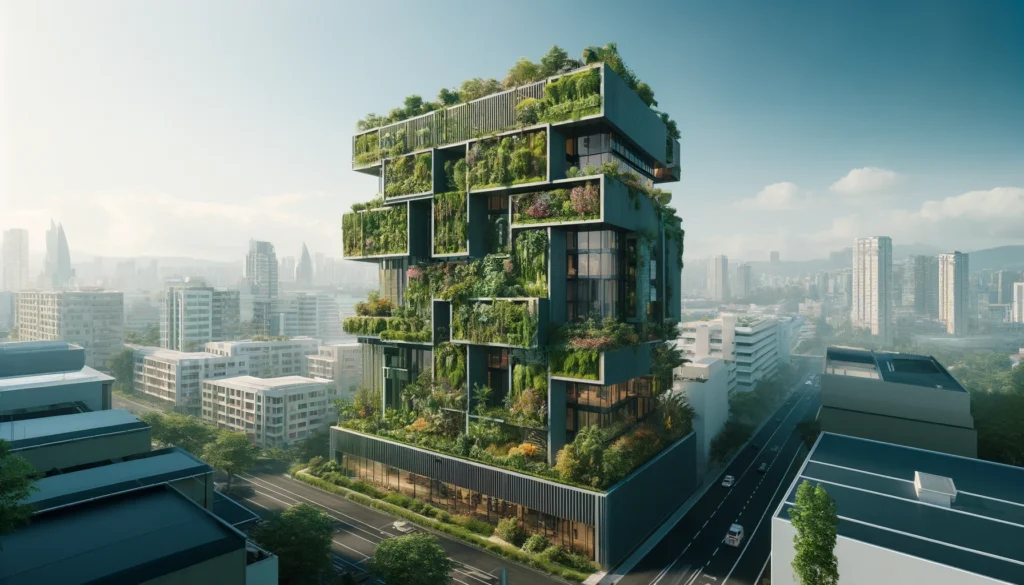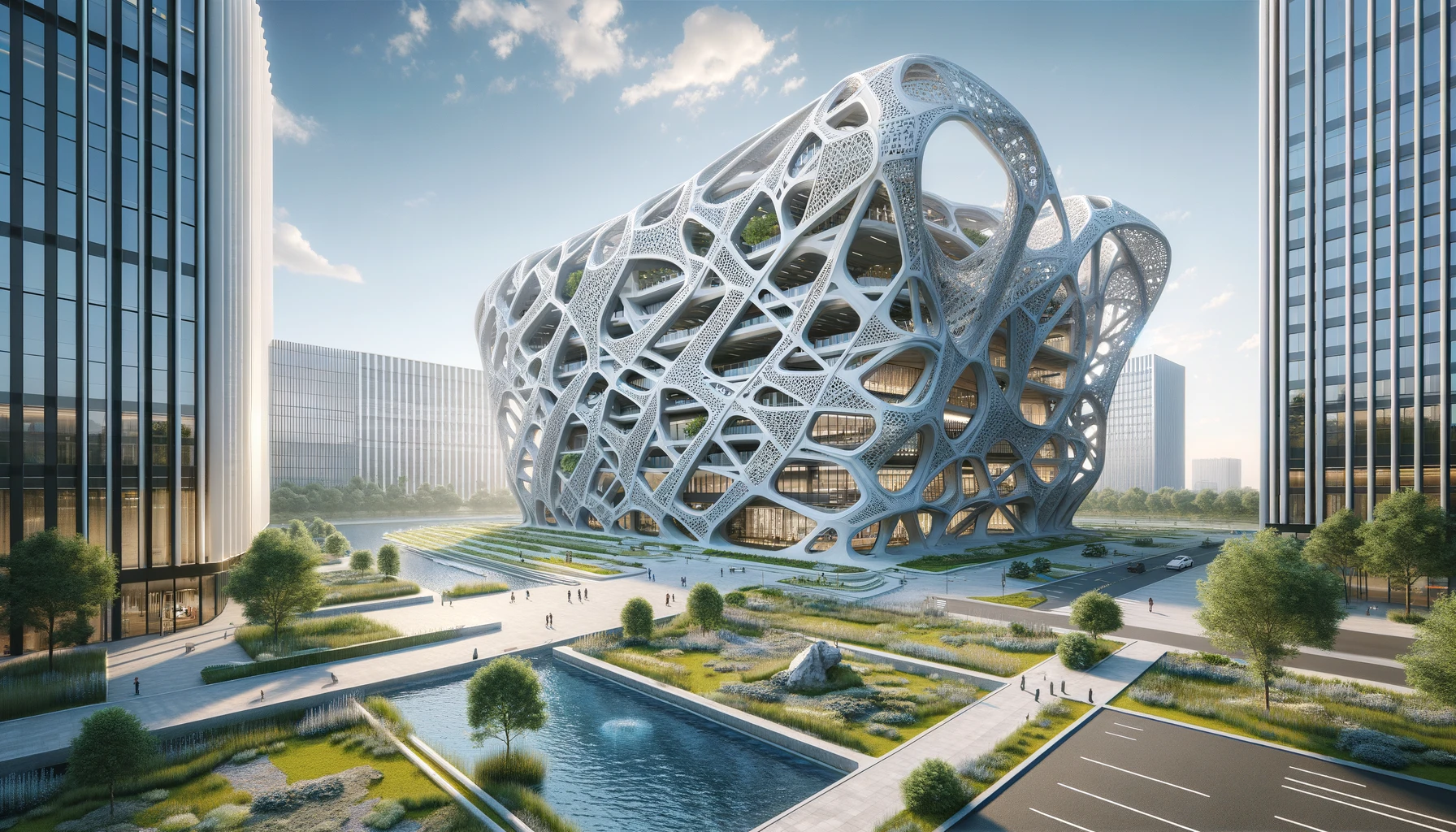The Evolution of Modern Architecture
In the ever-evolving world of architecture, innovation is a driving force that continually shapes our built environment. From the towering skyscrapers of our urban landscapes to the sustainable homes of the future, architectural innovation is at the forefront of redefining modern design. This article delves into the fascinating realm of architectural innovation, exploring key concepts, groundbreaking examples, and their impact on our daily lives.

Understanding Architectural Innovation
Architectural innovation encompasses the introduction of new ideas, technologies, and methods that transform the way buildings are designed, constructed, and experienced. It is about pushing boundaries, challenging conventions, and envisioning spaces that are not only functional but also aesthetically pleasing and environmentally sustainable.
The Role of Technology in Modern Design
One of the most significant drivers of architectural innovation is technology. Advances in digital tools, materials, and construction techniques have revolutionized the field. Building Information Modeling (BIM), for instance, allows architects to create detailed 3D models that enhance collaboration and streamline the construction process. Moreover, the integration of innovative technologies into buildings has led to the rise of smart homes and offices, where everything from lighting to security systems can be controlled remotely.
Example: The Edge in Amsterdam
The Edge in Amsterdam is a prime example of how technology is redefining modern design. Often referred to as the “smartest building in the world,” The Edge uses a sophisticated network of sensors to optimize lighting, heating, and energy usage, significantly reducing its environmental footprint. This innovative approach not only enhances the building’s efficiency but also creates a more comfortable and productive environment for its occupants.
Sustainability: A Core Principle
Sustainability is another cornerstone of modern architectural innovation. As concerns about climate change and resource depletion grow, architects are increasingly focusing on creating buildings that minimize environmental impact. This includes the use of renewable energy sources, energy-efficient systems, and sustainable materials.
Example: Bosco Verticale in Milan
Bosco Verticale, or Vertical Forest, in Milan, exemplifies sustainable architectural innovation. These residential towers are adorned with thousands of trees and plants, creating a green oasis in the heart of the city. This not only improves air quality but also provides natural insulation, reducing the need for artificial heating and cooling. Bosco Verticale demonstrates how integrating nature into urban design can lead to healthier, more sustainable living spaces.
The Influence of Biophilic Design
Biophilic design is an emerging trend in modern architecture that emphasizes the connection between humans and nature. This design philosophy incorporates natural elements such as plants, natural light, and water features into the built environment, enhancing well-being and productivity.
Example: Amazon Spheres in Seattle
The Amazon Spheres in Seattle are a stunning example of biophilic design. These glass domes house a lush indoor garden with over 40,000 plants from around the world. The Spheres provide Amazon employees with a unique workspace that promotes creativity and reduces stress. This innovative design demonstrates how biophilic principles can be applied to create healthier, more inspiring work environments.
Adaptive Reuse: Breathing New Life into Old Structures
Adaptive reuse is the process of repurposing old buildings for new uses, preserving their historical value while meeting contemporary needs. This approach not only conserves resources but also revitalizes communities and maintains a sense of continuity and identity.
Example: The Tate Modern in London
The Tate Modern in London is a quintessential example of adaptive reuse. Housed in a former power station, this world-renowned art gallery retains much of its original industrial character while providing a modern space for contemporary art. The transformation of the power station into a cultural landmark highlights the potential of adaptive reuse to create vibrant, multifunctional spaces.
Parametric Design: Pushing the Boundaries of Creativity
Parametric design is a cutting-edge approach that uses algorithms to generate complex forms and structures. This technique allows architects to explore new geometries and create buildings that are both visually striking and highly functional.
Example: The Morpheus Hotel in Macau
The Morpheus Hotel in Macau showcases the possibilities of parametric design. Its free-form exoskeleton, designed using parametric modeling, gives the building a futuristic appearance while providing structural support. The Morpheus Hotel illustrates how parametric design can lead to groundbreaking architectural forms that challenge traditional notions of structure and aesthetics.
The Future of Architectural Innovation
The future of architectural innovation holds exciting possibilities. As technology continues to advance, architects will have new tools and materials at their disposal, enabling them to create even more sustainable, efficient, and inspiring buildings. Emerging trends such as 3D printing, modular construction, and artificial intelligence are poised to revolutionize the field, offering new ways to design and build.
Conclusion
Architectural innovation is a dynamic and ever-evolving field that redefines modern design. By embracing new technologies, sustainable practices, and creative approaches, architects are shaping the future of our built environment. From intelligent buildings and sustainable towers to biophilic workplaces and adaptive reuse projects, the examples discussed in this article highlight the diverse and transformative nature of architectural innovation. As we look to the future, it is clear that the possibilities are endless, and the impact on our lives will be profound.
The Impact of Architectural Innovation on Urban Living
In the context of urban living, architectural innovation plays a crucial role in enhancing the quality of life. Innovative design solutions address the challenges of population growth, limited space, and environmental sustainability, making cities more livable and resilient.
Smart Cities: The Future of Urban Living
Smart cities leverage technology to improve urban infrastructure and services. From intelligent transportation systems to energy-efficient buildings, smart cities aim to create more efficient, sustainable, and connected urban environments.
Example: Songdo International Business District
Songdo International Business District in South Korea is a model for smart city development. This meticulously planned city integrates cutting-edge technologies to manage traffic, waste, and energy. Songdo’s buildings are equipped with intelligent systems that monitor and optimize energy usage, contributing to a more sustainable urban environment.
Green Roofs and Vertical Gardens: Bringing Nature to Urban Spaces
Green roofs and vertical gardens are innovative solutions that bring nature into urban environments. These features not only enhance the aesthetic appeal of buildings but also provide numerous environmental benefits, such as improved air quality and reduced urban heat island effect.
Example: One Central Park in Sydney
One Central Park in Sydney is renowned for its striking vertical gardens. The building’s façade is covered with a diverse array of plants, creating a green oasis in the heart of the city. This innovative design not only beautifies the urban landscape but also contributes to biodiversity and environmental sustainability.
The Role of Public Spaces in Urban Innovation
Public spaces are essential components of urban design, providing areas for social interaction, recreation, and cultural activities. Innovative approaches to public space design can enhance the livability and vibrancy of cities.
Example: High Line in New York City
The High Line in New York City is a prime example of innovative public space design. This elevated park, built on a disused railway track, has become a beloved urban oasis. The High Line’s design incorporates green spaces, art installations, and community spaces, transforming an industrial relic into a vibrant public amenity.
Architectural innovation is redefining modern design, creating buildings and urban spaces that are more sustainable, efficient, and inspiring. By embracing new technologies and creative approaches, architects are shaping the future of our cities, making them more livable and resilient. As we continue to innovate and push the boundaries of design, the impact on our urban environments will be profound, paving the way for a brighter, more sustainable future.
